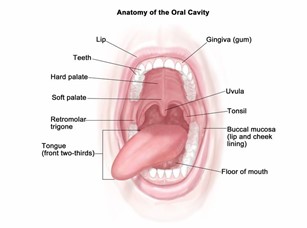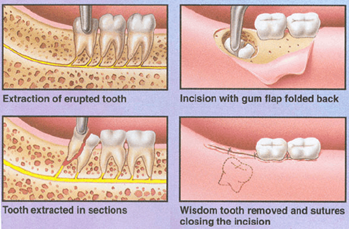
Department of Maxillo-Facial/ Oral Oncology & Reconstruction:
Nemcare Heart Institute & Research Centre
An Oral and Maxillo-Facial Surgeon (OMFS) is a surgical specialist with expertise in the mouth, face and jaws. With sub- specialty training in Head and Neck Oncology & Reconstruction, an Oral and Maxillofacial Surgeon, covers a vast array of disease processes that affect the oral cavity and surrounding structures offering both comprehensive ablative, reconstructive and rehabilitative services.
Pathologic Conditions
OMFS diagnose and manage patients with diseases of the oral and maxillofacial region including the following
Oral Cancer Surgery
• Oral Cancer - which is most often squamous cell carcinoma. Oral cancer is largely caused by cigarette smoking, smokeless tobacco, viruses and other environmental factors. Surgical removal is frequently the recommended treatment, often with combined removal of the lymph nodes followed by appropriate reconstruction.


• Salivary Gland Neoplasm/other H & N malignancies - These are invasive lesions in the cancer spectrum that can involve various tissues, including bone and salivary glands. Treatment often requires surgical removal and possible reconstruction as appropriate.
• Facial Skin Cancer - Basal cell, squamous cell, and melanoma cancers are the most common types. OMF Surgeon provide removal and provide simultaneous reconstruction to make affected tissue area appear as natural as possible.
• Benign Cyst/Tumor of the Maxillofacial & Oral Cavity region.
Reconstructive Surgery
OMFS can provide reconstructive care that encompasses restoration of both form and function. The blend of backgrounds covering dentistry, medicine, and head and neck surgery offers a complete understanding of all facial components. By using various techniques from simple closure to complicated tissue transfers including microvascular surgery, the jaws and facial anatomy can be reconfigured with a cosmetic, natural appearance, and provide a proper functioning bite. For reconstructive purposes, soft tissues (skin, mucosa, fat, muscle) and hard tissues (bone, cartilage) can be taken from various parts of a patient’s own body based on necessary size and shape, or can be utilized from donated or engineered tissues, or growth factors. They often use state of the art technology with computerized 3D surgical planning & custom prosthesis design for patient specific rehabilitation.
Maxillofacial Trauma
There are several possible causes of facial trauma. Motor vehicle accidents, accidental falls, sports injuries, interpersonal violence, dog bites and work-related injuries account for many. Types of facial injuries can range from injuries of teeth, to extremely severe injuries of the skin and bones of the face. Typically, facial injuries are classified as either soft tissue injuries (skin and gums), bone injuries (fractures), or injuries to special regions (such as the eyes, facial nerves or the salivary glands).
Soft Tissue Injuries of the Maxillofacial Region
Oral and Maxillofacial Surgeons are well trained and proficient at diagnosing and treating facial lacerations as well as intra oral lacerations
Bone Injuries of the Maxillofacial Region
Fractures of the bones of the face are increasingly common, and may affect the patient’s vision, their ability to breathe, speak, and perhaps even swallow. Bones that are broken in the face, such as the lower jaw, upper jaw, palate, cheekbones, and eye sockets are best treated and stabilized by the surgical placement of small "plates and screws" at the involved site. The relatively recent development and use of "rigid fixation" has profoundly improved the recovery period for many patients by allowing them to return to normal function more quickly.
The treatment of facial fractures should be accomplished in a thorough and predictable manner. Most importantly, the patient's facial appearance should be minimally affected. An attempt at accessing the facial bones through the fewest incisions necessary is always made. At the same time, the incisions that become necessary are designed to be small and, whenever possible, are placed so that the resultant scar is "hidden".
Craniofacial Surgery
Surgical correction of maxillofacial skeletal deformities includes the reconstructive procedures that correct deformities of the jaws, facial skeleton, and associated soft tissues such as cleft lip and palate and cranial vault malformations such as craniosynostosis (abnormally shaped skull). These abnormalities may be caused by genetic, environmental, developmental, functional, and/or pathologic aberrations apparent at birth or manifested in subsequent growth and development or acquired through trauma, neoplastic processes, and degenerative diseases.
The principal goal of surgical correction of these skeletal deformities is restoration and/or improvement in function and prevention of potential sequelae.
Temporomandibular Joint (Jaw joint Surgery)
OMFS are also involved in the diagnosis and surgical and non-surgical management of temporomandibular joint (TMJ) disorders. It also includes the differential diagnosis of head, neck, and facial pain. This comprehensive knowledge affords the patient the ability to regain normal function while eliminating pain.
Orthognathic Surgery (Cosmetic Surgery)
Orthognathic surgery is performed to correct developmental growth abnormalities of the jaws and facial bones. Patients with these abnormalities usually present with a malocclusion. These problems can affect not only chewing but speech and the overall health of the individual as well as the esthetic appearance of the face. Surgical treatment is usually conducted in combination with orthodontics. The surgery is performed under general anesthesia. During the surgery, the jaws are moved to the correct position, not only to improve the patient's occlusion, but to restore normal facial appearance as well.
Dental Implants Rehabilitation
A dental implant is a surgical component made of titanium alloy that interfaces with the bone of the jaw or skull to support a dental prosthesis such as a crown, bridge, denture, facial prosthesis.
Wisdom/Impacted tooth removal
Impacted wisdom teeth are third molars at the back of the mouth that don't have enough room to emerge or develop normally. Wisdom teeth are the last adult teeth to come into the mouth (erupt). Most people have four wisdom teeth at the back of the mouth — two on the top, two on the bottom. Impacted wisdom teeth can result in pain, damage to other teeth and other dental problems. In some cases, impacted wisdom teeth may cause no apparent or immediate problems. But because they're hard to clean, they may be more vulnerable to tooth decay and gum disease than other teeth are.
Impacted wisdom teeth that cause pain or other dental complications are usually removed.





